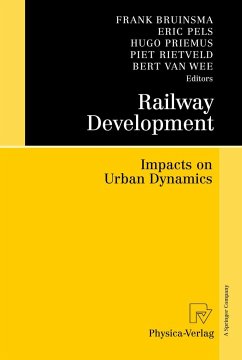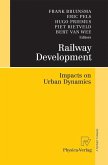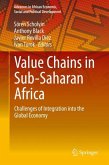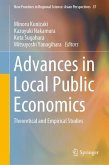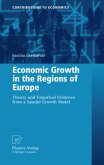The revitalisation of railway station areas has been a hot issue in policy making in Europe in recent years. The introduction of two new railway systems - the high speed train and light rail systems - has pushed forward the redevelopment of not only railway stations themselves, but also of their - in many cases deteriorated - direct surroundings. Examples of revitali- tion of railway station areas can be found throughout Europe, for example in countries like England (Liverpool), France (Euralille), Germany (Berlin) and the Netherlands (Amsterdam South Axis). The dynamics of revitali- tion of railway station areas can best be understood by combining the - sights of several disciplines; economics, and spatial sciences being the most important disciplines. This book therefore addresses the subject from a multi-disciplinary perspective. Railway station area redevelopment projects try to cope with the - creased lack of interoperability and interconnectivity between infrastr- tures andboost the local/regional economy by creating a new high quality multifunctional urban landscape at the same time. At present, the initial outcomes with the transformation of deteriorated railway station areas into modern mixed office, shopping and residential areas stems hopeful, but what are the prospects of those redeveloped areas? Most of the papers contained in this volume were presented at the s- th cial session "Railway stations and urban dynamics" of the 45 conference of the European Regional Science Association (ERSA) held in Amst- dam, the Netherlands during August 2005.
From the reviews:
"The book edited by Bruinsma and his colleagues address the issues of modern rail development (in this air and auto age) and put much on the table for analysts and policymakers ... . strong value of this book-for both transport planners and policy scientists-is the collective wisdom from the perspectives shown in the case study chapters. ... One strength of the book ... will be looked at by policymakers as well as academics-is the depth and thought of the case studies." (Robert E. Paaswell, Journal of Regional Science, Vol. 49 (2), 2009)
"The book edited by Bruinsma and his colleagues address the issues of modern rail development (in this air and auto age) and put much on the table for analysts and policymakers ... . strong value of this book-for both transport planners and policy scientists-is the collective wisdom from the perspectives shown in the case study chapters. ... One strength of the book ... will be looked at by policymakers as well as academics-is the depth and thought of the case studies." (Robert E. Paaswell, Journal of Regional Science, Vol. 49 (2), 2009)

